 Weird Stuff
Weird Stuff  Weird Stuff
Weird Stuff  Our World
Our World 10 Ways Your Christmas Tree Is More Lit Than You Think
 Movies and TV
Movies and TV The 10 Coolest Stars to Set Sail on The Love Boat
 History
History 10 Things You Didn’t Know About the American National Anthem
 Technology
Technology Top 10 Everyday Tech Buzzwords That Hide a Darker Past
 Humans
Humans 10 Everyday Human Behaviors That Are Actually Survival Instincts
 Animals
Animals 10 Animals That Humiliated and Harmed Historical Leaders
 History
History 10 Most Influential Protests in Modern History
 Creepy
Creepy 10 More Representations of Death from Myth, Legend, and Folktale
 Technology
Technology 10 Scientific Breakthroughs of 2025 That’ll Change Everything
 Weird Stuff
Weird Stuff Ten Bizarre Facts About The Doge Meme
 Our World
Our World 10 Ways Your Christmas Tree Is More Lit Than You Think
 Movies and TV
Movies and TV The 10 Coolest Stars to Set Sail on The Love Boat
Who's Behind Listverse?

Jamie Frater
Head Editor
Jamie founded Listverse due to an insatiable desire to share fascinating, obscure, and bizarre facts. He has been a guest speaker on numerous national radio and television stations and is a five time published author.
More About Us History
History 10 Things You Didn’t Know About the American National Anthem
 Technology
Technology Top 10 Everyday Tech Buzzwords That Hide a Darker Past
 Humans
Humans 10 Everyday Human Behaviors That Are Actually Survival Instincts
 Animals
Animals 10 Animals That Humiliated and Harmed Historical Leaders
 History
History 10 Most Influential Protests in Modern History
 Creepy
Creepy 10 More Representations of Death from Myth, Legend, and Folktale
 Technology
Technology 10 Scientific Breakthroughs of 2025 That’ll Change Everything
10 Fruits, Nuts, And Vegetables You Did Not Know Were Man-Made
Believe it or not, some of the popular fruits, nuts, and vegetables we eat today are man-made hybrids. They were created in laboratories through selective breeding, a process whereby only plants with favorable traits are replanted. That said, there have been rare instances where insects were responsible for creating the hybrid plants through cross-pollination.
SEE ALSO: 10 ‘Natural’ Things You Won’t Believe Are Actually Man-Made
Of course, these insects would never have been able to cross-pollinate the plants if humans hadn’t planted at least one of them in the area. Most of the entries on this list are surprising because the majority are fruits, nuts, and vegetables that we consider to be natural.
10 Cabbage, Broccoli, Cauliflower, Kale, And More
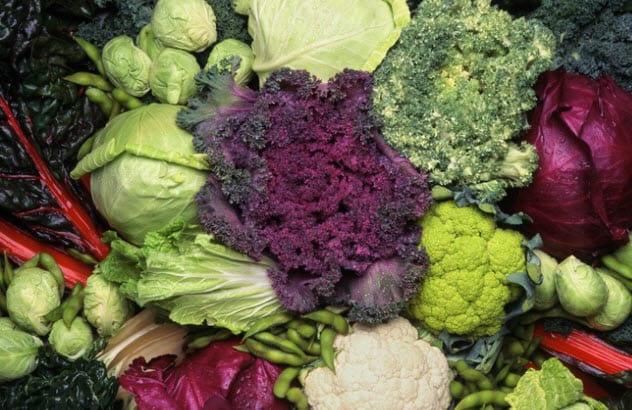
Cabbage, broccoli, cauliflower, kale, brussels sprouts, collard greens, kohlrabi, and several closely related vegetables originated from the same plant species: Brassica oleracea. Its original form is known as wild mustard and still exists today.
About 2,500 years ago, wild mustard only grew in some parts of Europe and the Mediterranean; its taste varied greatly depending on where it grew. Ancient Romans and Greeks soon realized that they could plant it for food so they engaged in selective breeding by planting seeds from wild mustard with larger leaves. The result was the vegetables that we now call kale and collard greens.
Selective breeding continued in the 1600s when people bred wild mustard with bigger leaf buds. The result was a new vegetable covered with lots of leaves—this was the first cabbage. Wild mustard selected for its bigger stems became kohlrabi, the ones with small heads became brussels sprouts, and the ones with big flowers became broccoli and cauliflower.[1]
The hybridization of wild mustard and its derivatives continued up to the 20th century. In 1928, Russian biologist Georgii Dmintrievich Karpechenko crossed a radish with a cabbage to produce what he called the rabbage. The rabbage should have been impossible because the radish is not related to the cabbage. However, the plant never caught on because it failed at being either a radish or a cabbage.
Later in 1993, the Sakata Seed Company of Yokohama, Japan crossbred broccoli with kai-lan to create broccolini, or as some call it, baby broccoli, asparation, asparations, broccoletti, broccolette, and Italian sprouting broccoli. It’s a derivative of wild mustard and is the Chinese version of broccoli.
9 Orange
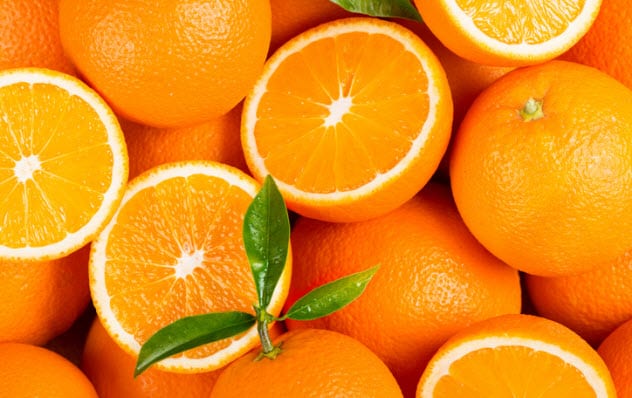
Many varieties of the orange exist today. However, every variety traces its roots to the man-made hybrid when the pomelo was crossed with the mandarin. The pomelo is almost as bitter as the grapefruit, while the mandarin is sweet. The mandarin has an orange color, which is why many people misidentify it as a variety of the orange. Wrong! The mandarin is an ancestor of the orange.
The history of the orange is unclear, but it is believed to have first appeared in southern China. Over the years, humans have selectively bred oranges to create many varieties, making it easy to confuse the orange with other citrus fruits. To be clear, a fruit needs to have evolved from the pomelo and mandarin to be considered an orange.
That said, the tangerine is not considered an orange because it evolved from the mandarin but not the pomelo. However, the tangelo, which we’ll get to shortly, is in a gray area. It’s a cross between a tangerine and a pomelo. And as we mentioned already, the tangerine was created from the mandarin.[2]
8 Peanut
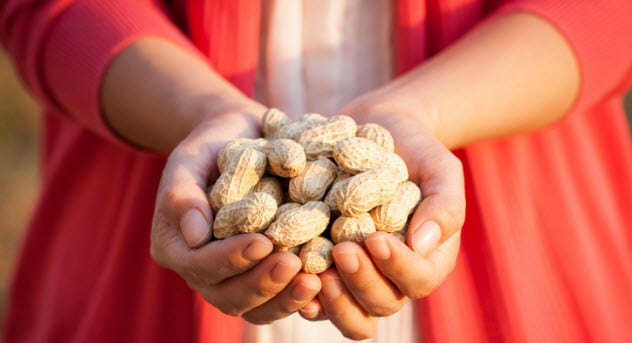
The modern peanut is a hybrid of two earlier types of peanuts, the Arachis ipaensis and the Arachis duranensis. The Arachis duranensis grows in the Andean valleys between Bolivia and Argentina, while the Arachis ipaensis grows inside Bolivia.
Both plants were found so far away from each other, they couldn’t have crossbred naturally. Researchers ultimately discovered that the earliest settlers in South America took the Arachis duranensis from the Andean valleys as they migrated into today’s Bolivia 10,000 years ago.
However, the settlers did not quickly realize the potential of their new crop and it was the bees that actually cross-pollinated both peanuts. The result was a new peanut that is the ancestor of today’s peanuts.[3]
7 Banana
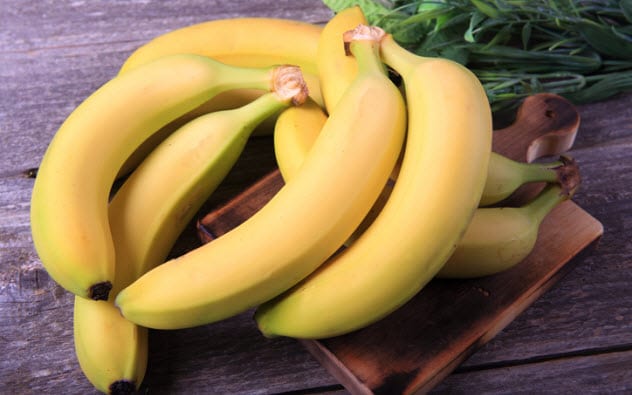
The modern, common banana is a man-made hybrid of the wild Musa acuminata and Musa balbisiana banana species. Musa acuminata has a fleshy inside, but it has a very unpleasant taste. Musa balbisiana has a pleasant-tasting inside but contains too many seeds.
Both bananas naturally crossbred in the forests of South Asia. However, the resultant banana, which is the ancestor of the modern banana, was sterile. About 10,000 years ago, early humans discovered the hybrid and learned that they could replant the shoots to create new trees. They engaged in selective breeding and only replanted bananas with favorable traits. This led to the creation of the modern banana.
Although we’ve managed to create the perfect banana, we could not figure out a way to grow bananas from seeds. So, bananas will become extinct if we stop planting them. The absence of a seed also means that all bananas have the same genetic properties as they are replanted from the shoot of another tree. As a result, all the world’s banana trees could be wiped out by a single disease.[4]
6 Almond
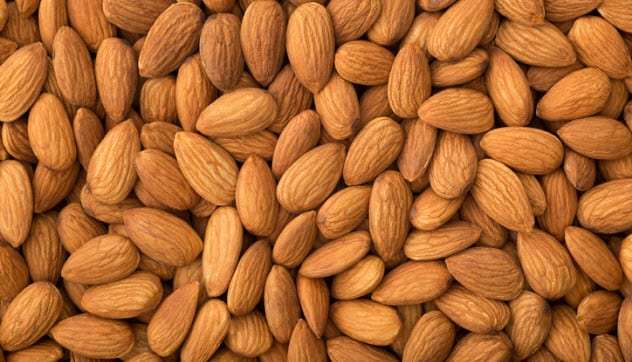
The almond is a man-made hybrid of the wild almond, which is notoriously bitter and could be deadly when consumed in considerable amounts. The history of the modern almond is unclear, and scientists still can’t determine which variant of the wild almond was selectively bred to create the modern almond.[5]
Scientists have their theories though. They suspect that the wild ancestor of the almond is the Amygdalus fenzliana (Fritsch) Lipsky because its trees, seeds, and fruits resemble the modern almond. It’s also found in Armenia and Azerbaijan, where today’s almond is believed to have been selectively bred by humans. Besides the origin, scientists cannot determine how our ancestors managed to create a perfect, sweet almond because the almond is poisonous.
SEE ALSO: 10 Foods That Exist Because Of Ancient Genetic Engineering
5 Grapefruit
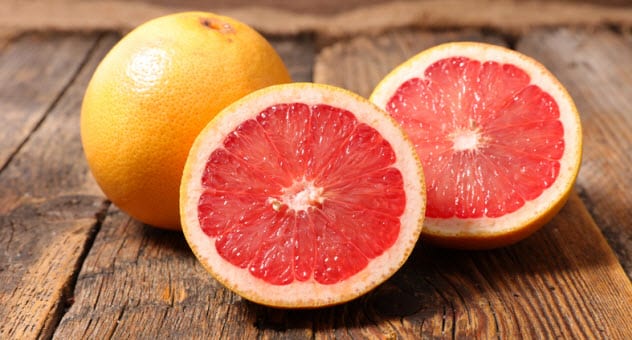
The grapefruit is a relatively new hybrid. It’s believed, although not confirmed that the grapefruit first appeared around 1693 when Captain Shaddock transported pomelo (Citrus maxima) seeds to the West Indies and planted them close to some orange trees. The pomelo and orange later cross-pollinated to create the grapefruit (then called shaddocks). However, the grapefruit was still unknown outside the Caribbean.
Europeans eventually learned of this citrus fruit in 1750 when Reverend Griffith Hughes encountered one. Hughes was so surprised with the discovery that he named the grapefruit “the forbidden fruit.” That was its name until 1814 when John Lunan, a planter and Jamaica magistrate, called it a grapefruit because they resembled the smaller and unrelated grapes when they were still growing.
The grapefruit finally reached the United States in 1823, but was mistaken for the pomelo. It was only determined to be a distinct fruit in 1837. However, botanists were still confused about its origin. It wasn’t until 1948 that they discovered it was a hybrid of the pomelo and the orange.[6]
4 Boysenberry
The boysenberry was created by Rudolph Boysen of Orange County, California in 1923. Boysen, a horticulturist, planted grafted berry vines on his in-law’s farm in Anaheim, eventually cultivating a successful hybrid. Unfortunately, Boysen’s berries never found commercial success and it seemed like his unique vine would go the way of the dodo bird.
Several years later, a fellow farmer from California named Walter Knott heard about the berry and asked its creator if he could try to make something of it. Knott successfully brought the dying hybrid back to life at his Buena Park, California farm. Knott then named the fruit after Boysen, and Knott’s Berry Farm eventually became the would famous amusement park we know today.
The boysenberry is considered to be a variant of the blackberry, although it’s actually a hybrid of a blackberry and either the loganberry or the red raspberry. For all we know, Boysen could have created the berry from of all three vines.
That said, tere are claims that the boysenberry is actually a cross between the Eastern dewberry and the man-made loganberry. The loganberry was created in 1881 when James Logan crossed a raspberry with a wild blackberry. However, the early boysenberry was not a commercial success due to its short shelf life. It decays just two days after harvest.[7]
3 Tangelo
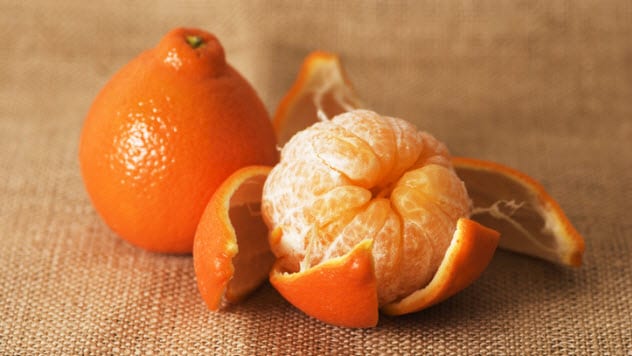
As we mentioned earlier, the tangelo is a man-made hybrid of the tangerine and the pomelo. In fact, that’s where the tangelo got its name. However, it is common for people to confuse the tangelo with the tangerine, mandarin, and orange.
To add to the confusion, there are different varieties of tangelos and all are not necessarily created from tangerines and pomelos. One common variant, the Minneola tangelo, is a hybrid of the tangerine and the Duncan grapefruit. Another variant was created by crossing a mandarin with a pomelo, which technically makes it an orange.
The tangelo is believed to have first appeared in the forests of Southeast Asia 3,500 years ago when insects cross-pollinated the mandarin with a fruit that is closely related to the grapefruit. However, today’s tangelos are the result of a selective breeding program that started in the 1800s.[8]
At the forefront of the tangelo project was the United States Department of Agriculture (USDA), which created the popular Minneola tangelo sold across the United States. The USDA released the seeds of the Minneola tangelo in 1931. It’s named after the city of Minneola, Florida.
2 Carrots
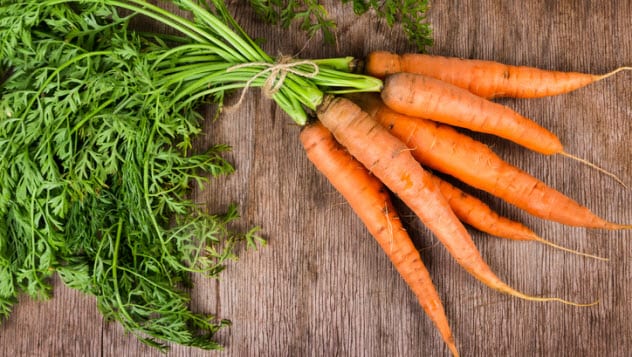
Carrots haven’t always been orange. Natural carrots were either white or purple and probably inedible. There are even accounts that white carrots were eaten in the Roman Empire, but historians believe that they could have been parsnips, white carrots, or both. Ultimately, the modern orange carrot we eat today is a hybrid of the yellow carrot, which is a hybrid of the white carrot.
The earliest-known ancestor of the modern consumable carrot appeared in Persia in the 10th century. Some accounts say it was white, and others say it was purple. Unlike today’s carrots, those vegetables had lots of smaller roots of varying sizes. The Persians selectively bred the carrots with the biggest roots to create bigger roots and, ultimately, a big single root.
As the selective breeding continued, the carrots mutated from white or purple to yellow and finally orange. Selective breeding of carrots continued until modern times to improve their flavor and color.[9]
1 Strawberry
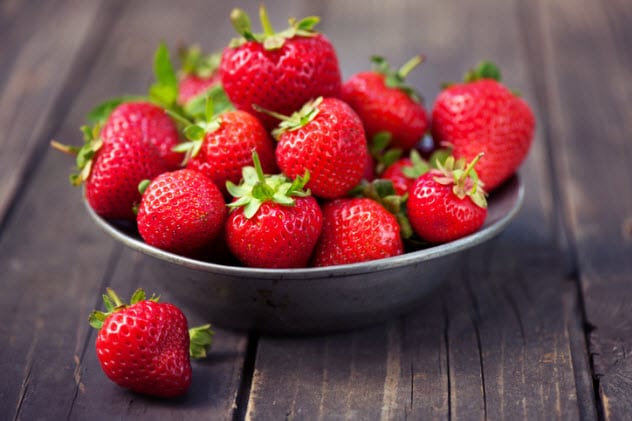
The modern strawberry is a man-made hybrid of the smaller wild strawberry, which has a shorter shelf life as well as a better flavor and aroma. The modern strawberry first appeared in France in the 18th century. However, the hybridization program began much earlier.
In the 1300s, French botanists started planting wild strawberries in their gardens when they realized that wild strawberries reproduced by cloning. Strangely, some strawberries never produced fruits and half of the ones that did suddenly stopped cloning and making fruits after some years.
The French managed to create wild strawberries that were 15 to 20 times their normal size, but they were still incredibly small. Antoine Nicolas Duchesne created the modern strawberry on July 6, 1764, when he crossed a male Fragaria moschata with a female Fragaria chiloensis from Chile.[10]
Before Duchesne created his strawberry, French botanists had never realized that strawberries had male and female parts. This was the reason some never produced fruits as some botanists had planted either males or females. Duchesne continued working on the strawberry until the French Revolution, leaving American and British botanists to perfect the modern strawberry.
Read more fascinating facts about fruits and vegetables on 10 Fascinating Facts About Fruits And Vegetables and Top 10 Surprising Histories Of Common Fruits.








